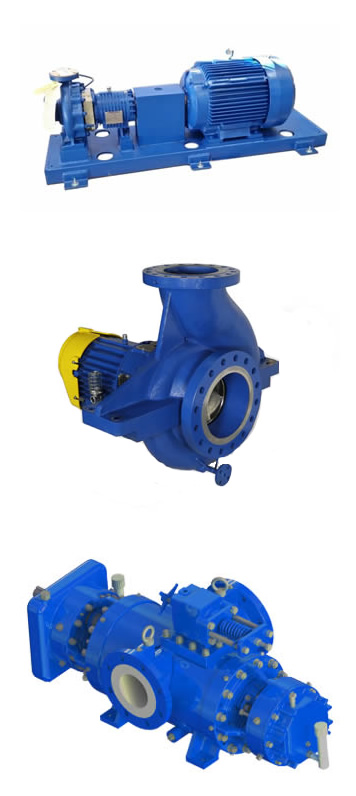





CENTRIFUGAL PUMPS
Centrifugal pumps are utilized for fluid transportation by converting rotational kinetic energy into hydrodynamic energy. The fluid enters the pump impeller along or near the rotating axis, is accelerated by the impeller, and flows radially outward into a diffuser or volute chamber (casing) before exiting the system.
Commonly utilized for water, sewage, agriculture, petroleum, and petrochemical pumping, centrifugal pumps are often selected for their high flow rate capabilities, compatibility with abrasive solutions, mixing potential, as well as their relatively simple engineering.
POSITIVE DISPLACEMENT PUMPS
A positive displacement pump operates by trapping a fixed amount of fluid and then forcing that trapped volume into a discharge pipe. Liquid enters the pump as the cavity on the suction side expands and exits the pump as the cavity collapses. The volume remains constant throughout each cycle of operation.
Positive-displacement pumps are commonly used for high-viscosity applications, including:
- Piston and plunger pumps for pumping low-viscosity fluids, paint spraying, oil production, and high-pressure washing.
- Diaphragm pumps for metering, spraying, and treating water, oils, and paints.
- Gear pumps for pumping high-viscosity fluids in petrochemical, food, and paint industries.
- Lobe pumps in food and chemical industries, pharmaceuticals, biotechnology, and sanitary applications.
- Screw pumps for fuel transfer, oil production, and irrigation.
- Vane pumps for low-viscosity liquids, fuel loading, and transmission.
